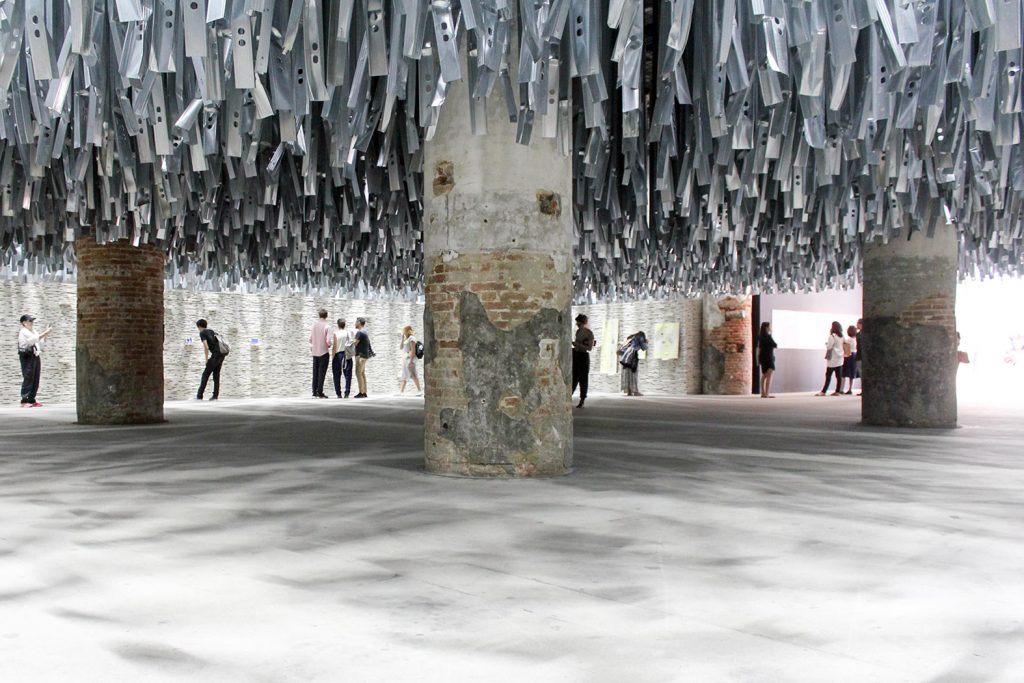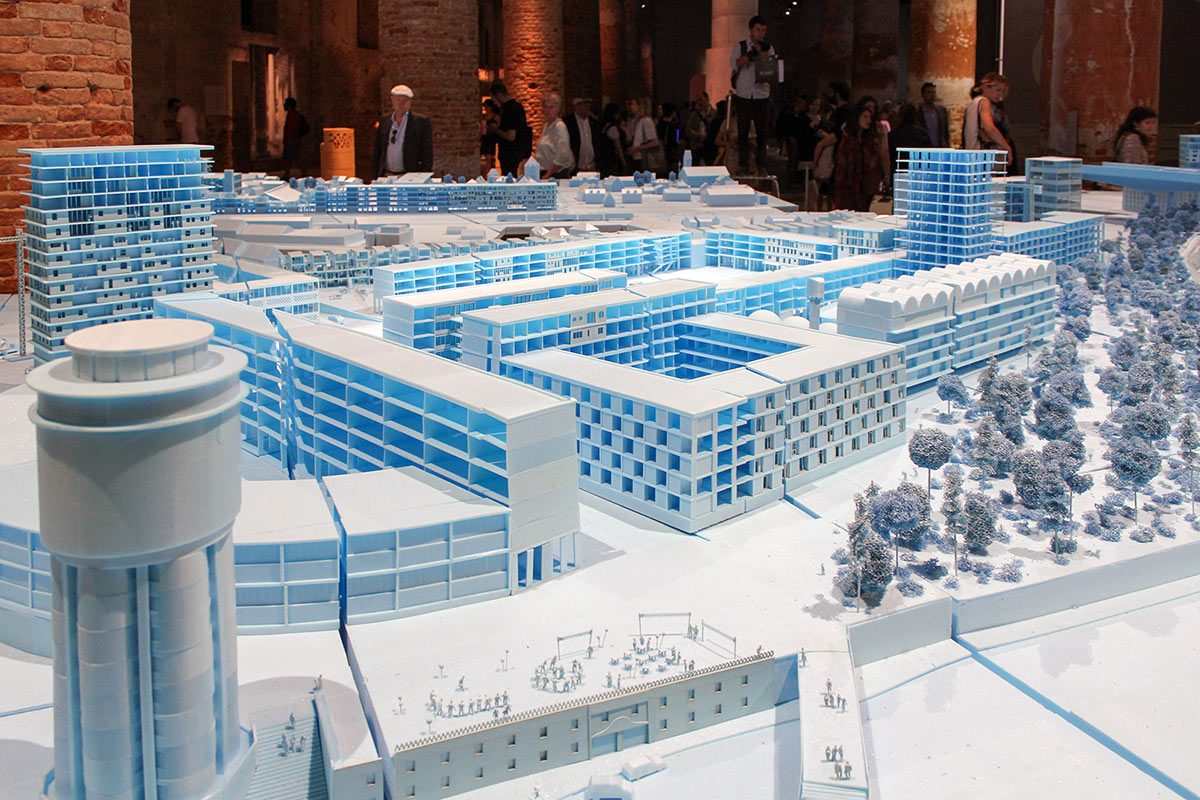Venice Architecture Biennale 2016: Reporting from the Front
This year’s international exhibition shifts focus from the stars to addressing critical issues like immigration, sustainability and more


Over 100 tons of perfectly ordered rubble is what greets visitors to the 15th International Architecture Exhibition of the Venice Biennale. It’s not a provocation, but rather a statement, in perfect harmony with this year’s theme: “Reporting from the Front.” President Paolo Baratta and curator Alejandro Aravena made a strong choice here; between pure avant-garde and local traditions and the overarching reaction many visitors have is paradoxical. The event isn’t about shocking or surprising at any cost, but to make people think. And this alone is the true vocation of every Biennale.

The first installation is curated by Aravena (the Chilean architect who won the 2016 Pritzker Architecture Prize) and is repeated at both locations of the exhibition, the Arsenale and the Central Pavilion at the Giardini. It’s a ceiling of vertical metal structures, hanging like stalactites, surrounded by a wall of plasterboard clippings. Made from materials used for the construction of last year’s Art Biennale, the piece offers a powerful message. And it’s not one of guilt or criticism, but one of encouragement and hope.
This is not the Biennale of certainties, but of questions that can be answered. It is no coincidence that in several areas there are many peremptory questions, written on walls and installations. Is it possible to create a public space in a private commission? Does permanence matter? Do we really need to produce so much waste? Why does the theme of the common good seem so pervasive? Many projects are striking for their ingenuity. We saw many examples of ideas so simple they seem obvious, but are perfect solutions for many issues that we face all over the world—from displacement and immigration to traffic, pollution, waste and more; themes that Aravena has made explicit in the beautiful exhibition catalog.

The theme of immigration and displacement is found in two projects coming from opposite sides of the world. The first is the Neubau by BeL Sozietät für Architektur who have designed a system of neutral public housing that can be changed radically from those who live here, both inside and outside. From India’s Rahul Mehrotra and Felipe Vera (who have studied the Khumb Mela, a Hindu festival which is held every 12 years and sees the participation of 19 million people) is a completely sustainable booth, made of canvas and bamboo. Inside they display data and solutions that can be applied to migration affecting the urban areas of every megalopolis. The underlying conclusion is that cities are more ephemeral than previously believed.

A surreal effect also emerges from a certain use of the materials, which often aren’t what they seem or are found in unexpected contexts. This is the case with Austrian-based architecture firm Marte.Marte’s reinforced concrete that looks like stone. The firm (founded by Bernhard Marte and Stefan Marte) focuses on infrastructure that has a strong social impact.

A masterful use of material can also be found in the work of Colombian architect Simón Vélez, who defines bamboo as “vegetable steel” and calls work “vegetarian architecture.” For years he has used bamboo for many projects, mixing it with other materials to create fascinating pieces. Likewise, Anupama Kundoo Architects combines paper, fabric and urban waste as building materials to create unique color combinations and textures.

Japanese architect Kengo Kuma (who will be designing the new Hans Christian Andersen museum in Denmark) creates structures—in plastic, metal, and wood—that give a new outlook on materials whose lightness, flexibility, and robustness are used in surprising ways.

An equally strong and peculiar approach by Madrid-based José María Sánchez García appears in the form of a wall punctuated by glass bottles, a smart way to save material and use leftovers.
Plenty of “starchitects” are represented, albeit in small spaces in which they have small projects—again proving that the Biennale is truly for designers of all levels. Norman Foster, who with his foundation, has proposed an almost sci-fi project. He imagined a drone-port, a place to land drones capable of carrying medicines, food and other goods to the most disadvantaged and developing areas. This domed structure is modular, can be constructed quickly using local labor and materials and can be adapted to different needs.

The 2016 Biennale of Architecture is significant for its analysis of the boundaries of sustainability and technology, between desire for novelty and preservation of resources, between modernist and traditional architecture. There’s a sense that the future is already here, and what is really needed is to recover the past—but without nostalgia.
The 15th International Architecture Exhibition of the Venice Biennale is open now through 27 November.
Images by Paolo Ferrarini












